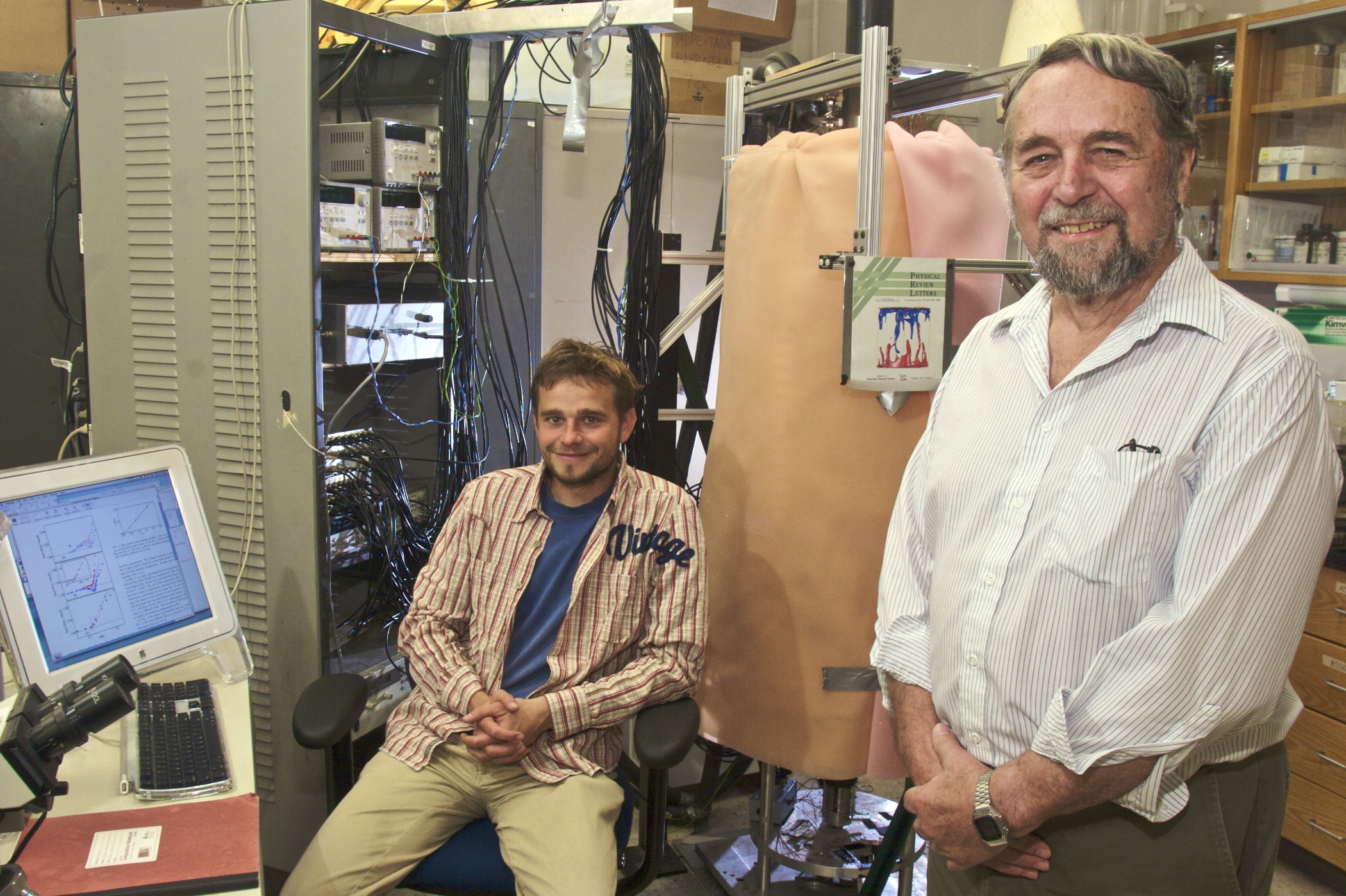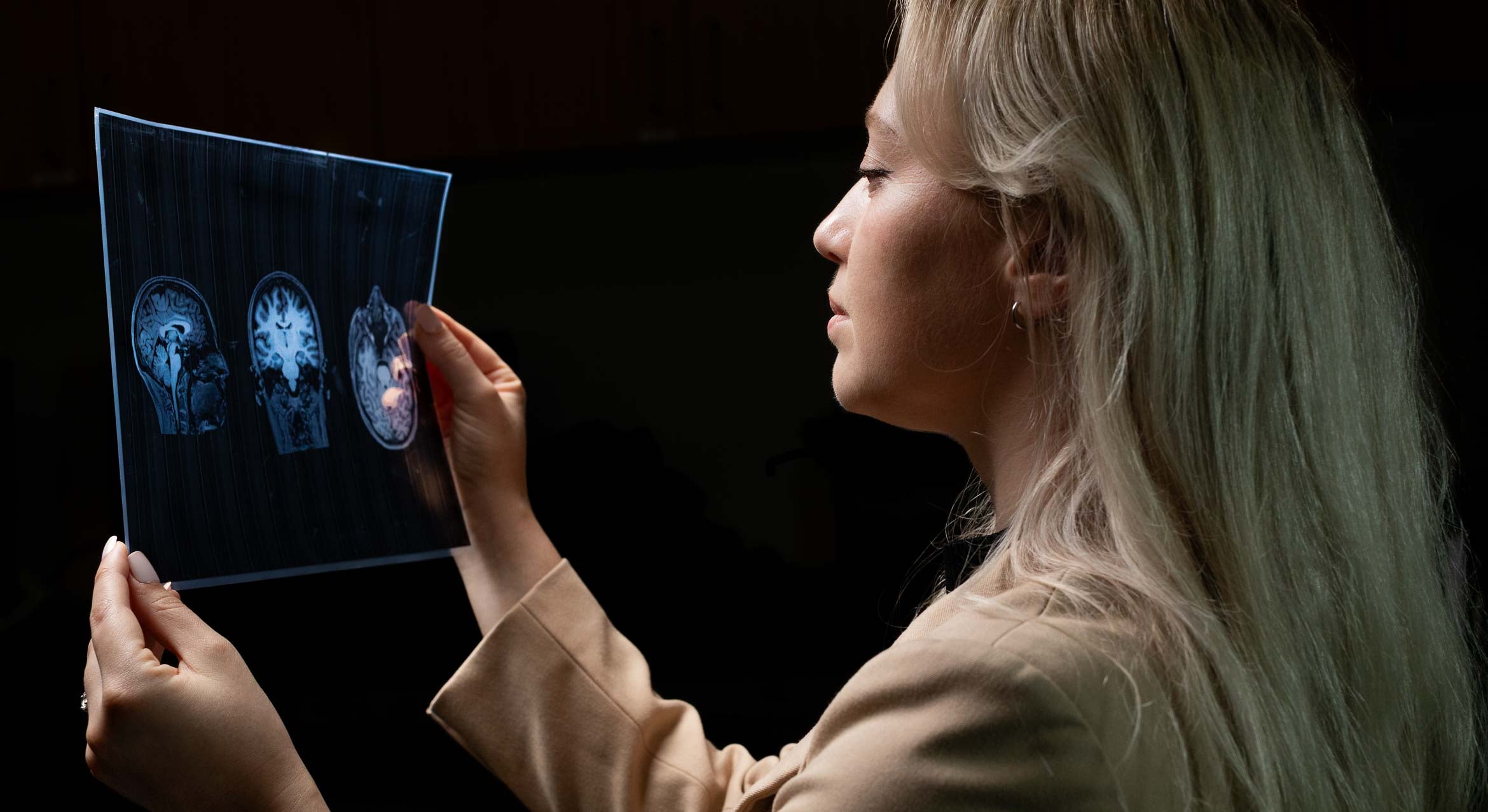
Tempest in a Teapot: International Team of Scientists Describes Basic Laboratory Science of Hurricanes and Other Swirling Natural Phenomena
Scientists can use cylinders as small as teapots to study the mechanisms involved in powerful hurricanes and other swirling natural phenomena.
The earth's atmosphere and its molten outer core have one thing in common: Both contain powerful, swirling vortices. While in the atmosphere these vortices include cyclones and hurricanes, in the outer core they are essential for the formation of the earth's magnetic field. These phenomena in earth's interior and its atmosphere are both governed by the same natural mechanisms, according to experimental physicists at UC Santa Barbara working with a computation team in the Netherlands.
Using laboratory cylinders from 4 to 40 inches high, the team studied these underlying physical processes. The results are published in the journal Physical Review Letters.
"To study the atmosphere would be too complicated for our purposes," said Guenter Ahlers, senior author and professor of physics at UCSB. "Physicists like to take one ingredient of a complicated situation and study it in a quantitative way under ideal conditions." The research team, including first author Stephan Weiss, a postdoctoral fellow at UCSB, filled the laboratory cylinders with water, and heated the water from below and cooled it from above.
Due to that temperature difference, the warm fluid at the bottom plate rose, while the cold fluid at the top sank –– a phenomenon known as convection. In addition, the whole cylinder was rotated around its own axis; this had a strong influence on how the water flowed inside the cylinder. Rotation, such as the earth's rotation, is a key factor in the development of vortices. The temperature difference between the top and the bottom of the cylinder is another causal factor since it drives the flow in the first place. Finally, the relation of the diameter of the cylinder to the height is also significant.
Ahlers and his team discovered a new unexpected phenomenon that was not known before for turbulent flows like this. When spinning the container slowly enough, no vortices occurred at first. But, at a certain critical rotation speed, the flow structure changed. Vortices then occurred inside the flow and the warm fluid was transported faster from the bottom to the top than at lower rotation rates. "It is remarkable that this point exists," Ahlers said. "You must rotate at a certain speed to get to this critical point."
The rotation rate at which the first vortices appeared depended on the relation between the diameter and the height of the cylinder. For wide cylinders that are not very high, this transition appeared at relatively low rotation rates, while for narrow but high cylinders, the cylinder had to rotate relatively fast in order to produce vortices. Further, it was found that vortices do not exist very close to the sidewall of the cylinder. Instead they always stayed a certain distance away from it. That characteristic distance is called the "healing length."
"You can't go from nothing to something quickly," said Ahlers. "The change must occur over a characteristic length. We found that when you slow down to a smaller rotation rate, the healing length increases."
The authors showed that their experimental findings are in keeping with a theoretical model similar to the one first developed by Vitaly Lazarevich Ginzburg and Lev Landau in the theory of superconductivity. That same model is also applicable to other areas of physics such as pattern formation and critical phenomena. The model explains that the very existence of the transition from the state without vortices to the one with them is due to the presence of the sidewalls of the container. For a sample so wide (relative to its height) that the walls become unimportant, the vortices would start to form even for very slow rotation. The model makes it possible to describe the experimental discoveries, reported in the article, in precise mathematical language.
The other UCSB author is postdoctoral fellow Jin-Qiang Zhong. Additional authors are Richard J. A. M. Stevens and Detlef Lohse from the University of Twente and Herman J. H. Clercx from Eindhoven University of Science and Technology, both in the Netherlands.
Related Links



